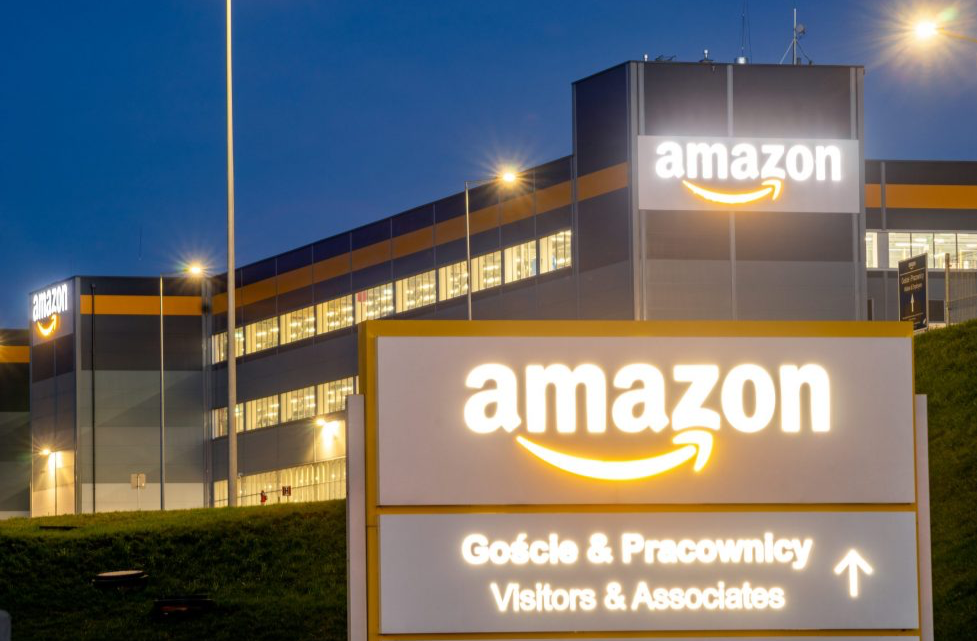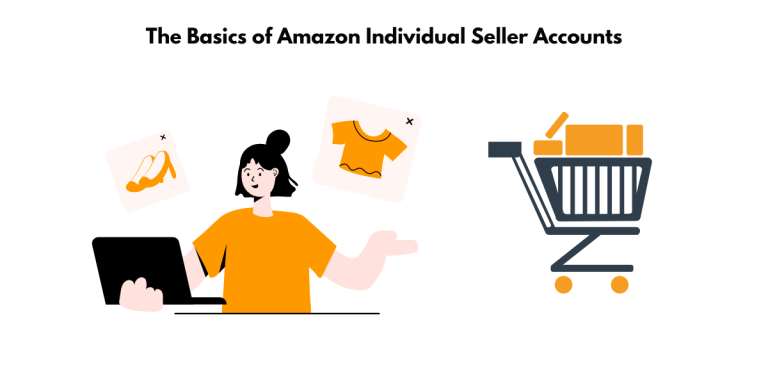8 facts you didn’t know about Amazon’s supply chain system
How does Amazon manage its supply chain and logistics?
Merchants who use Amazon Marketplace have numerous fulfillment options to present to them.
They are free to choose whether they are eager to manage fulfillment themselves or allow Amazon to arrange, package, and dispatch products via their fulfillment hubs.
Amazon stipulates that third-party sellers on the Amazon marketplace have the opportunity to use the fulfillment services Amazon offers:
- Fulfillment by Amazon (FBA) Merchants can take advantage of Amazon’s fulfillment for items sold on the Amazon Marketplace.
- Fulfilled by Merchant (FBM) Merchants will manage the fulfillment for their merchandise sold on the Amazon Marketplace.
How do Amazon’s demand and supply work?
Amazon has changed how they correspond inventory demand to sellers by adding a new component called Probability Level Demand Forecast.
Sellers are now compelled to make crucial decisions that may impact their Amazon stock levels directly, which will then consequently impact the progress of their whole business.
Demand will continuously be based on sales history, glance views, and estimated demand for planned promos. Still, the forecast offers at least three new probable options for the merchants to choose from, which include:
P70
This means there’s a 70% probability that Amazon will buy the level of demand stated or less and a 30% possibility that they will buy more.
P80
There is an 80% probability that Amazon will buy the level of demand stated or less and a 20% possibility that they will buy more.
P90
There is a 90% probability that Amazon will buy the level of demand stated or less and a 10% possibility that they will buy more.

8 facts you might not know about Amazon’s supply chain system
Amazon’s supply chain dive is an integral part of the global economy, and it is one of the world’s most efficient and innovative supply chains.
To stay ahead of the competition, Amazon must continuously adapt and innovate to stay ahead of the curve.
Here are 8 facts you might not know about Amazon’s supply chain system.
1. Amazon’s supply chain system is one of the key reasons behind the company’s success
Amazon’s success is largely thanks to its well-developed supply chain system.
By leveraging analytical software, Amazon has been able to identify potential problems, optimize pricing, improve inventory allocation, and provide dynamic scheduling to ensure the timely delivery of products.
The company has also invested in its team of super-users, who can drive the system from within the organization and ensure that the supply chain is an efficient and seamless extension of Amazon’s operations.
This has allowed Amazon to reduce on-time supply, grow its customer base and ensure that consumers remain satisfied with their purchases.
2. Amazon’s supply chain system is complex and includes many activities, processes, and systems
Amazon’s supply chain system is incredibly complex.
From its beginnings as an online bookstore to its current status as a global retail dive and technology powerhouse, Amazon has developed a highly intricate network of suppliers and logistics providers.
The company employs sophisticated data analytics and technology to manage its vast network of partners, with little to no latency in gathering and analyzing data from its supply chain.
This enables Amazon to track product quality, delivery times, costs, customer experience, and profitability.
Amazon has also implemented codes of conduct and ethical guidelines into its corporate culture and management systems to ensure responsible practices throughout its supply chain.
Amazon’s supply chain system is highly comprehensive and detailed, making it one of the most complex in the world.
3. Amazon’s supply chain system focuses on customers, speed, and agility
Focusing on customers, speed, and agility benefits include cost savings, improved competition, enhanced customer experience, and the ability to make smart business decisions.
By optimizing their supply chains, organizations can reduce the number of mediators, resulting in reduced costs and greater collaboration.
Additionally, consumer expectations are constantly being driven higher, and organizations can improve availability, price, assortment, and speed of delivery to gain a competitive edge.
Focusing on customer speed and agility leads to increased efficiency and improved delivery times, freeing up cash flow, saving money, and delivering smarter.
Finally, organizations can track their progress with KPIs such as inventory, availability, and spoilage and track staff hours used for tasks before, during, and after the transformation.

4. Amazon’s supply chain system relies on cross-functional teams and business processes
Like many other e-commerce companies, Amazon has developed a comprehensive supply chain system that relies on cross-functional teams and business processes.
The core components of Amazon’s supply chain system include planning, sourcing, manufacturing, delivery and logistics, and returns.
Planning involves determining the resources required to meet customer demand.
Sourcing involves selecting the suppliers that will provide the goods and services needed to create the product.
Manufacturing involves accepting raw materials, creating the product, testing for quality, and packaging the product for shipping.
Delivery and logistics involve coordinating customer orders, scheduling deliveries, managing inventory, and authorizing supplier payments.
Finally, Amazon has a process for handling returns of defective, excess, or unwanted products.
The success of Amazon’s supply chain system relies heavily on the effective integration of all these components, facilitated by cross-functional teams from each of the areas.
These teams work together to ensure that all aspects of Amazon’s supply chain operations run smoothly.
Additionally, Amazon relies on a variety of metrics to measure the effectiveness and efficiency of its supply chain system, including the following:
- delivery and order fulfillment performance
- production flexibility
- warranty and returns processing costs
- inventory and asset turns
5. Amazon’s supply chain system is continuously evolving and changing to meet the needs of the company
Amazon’s supply chain system continuously evolves through innovative digital management solutions and strategies.
Companies are leveraging the power of technology to create solutions that enable faster, more efficient supply chain processes.
This includes using automation to connect shippers and carriers and machine learning to manage inventory more effectively.
Additionally, Amazon is making significant investments in leadership appointments, technology, and sustainability to ensure its supply chain system is optimized for the future.
6. Amazon’s supply chain system is designed to be lean and efficient
Amazon has a well-known supply chain system that is incredibly lean and efficient.
This system is enabled by predictive analytics and enhanced visibility, allowing smarter decisions and greater efficiency.
Amazon’s just-in-time supply chain model reduces cost, waste, and time in the production cycle by automatically sending replenishment orders to manufacturers based on retail sales.
Through data analysis, manufacturers can also anticipate shortages before buyers are even aware of them, thus increasing customer satisfaction.
Additionally, Amazon can dynamically adjust the prices of seasonal items to maximize its margins.
They also use analytical software tools to help allocate resources, schedule work and accurately deliver products to buyers.
Finally, Amazon cancan provides a personalized customer experience by delivering faster and more efficient customer service.
These innovations have enabled Amazon to stay ahead of the competition and become one of the world’s most successful supply chain systems.

7. Amazon’s supply chain system relies on SCM technologies to streamline processes and increase efficiency
SCM technologies are cloud-based technologies that optimize the supply chain by reducing time, resources, and inventory visibility.
These technologies can facilitate work being processed offline from a mobile app, allowing companies to access inventory in areas with no online coverage or connectivity.
They help manage the complex logistics of supply chains that involve multiple enterprises, suppliers, manufacturers, and retailers.
Examples of SCM technologies include location-allocation, vehicle routing analysis, dynamic programming, and traditional logistics optimization.
Here are some examples of SCM technologies many warehouse management companies use:
- Supply chain control tower: provides end-to-end visibility across the supply chain.
- Order management: track orders from inception to fulfillment and manage people, processes, and data connected to the order.
- Inventory management: clear visibility into inventory transactions.
- Electronic data interchange (EDI): standard format for exchanging business information between two organizations electronically.
- Supply chain analytics: analytics to affect quality, delivery, customer experience, and profitability.
- Supply chain optimization: utilizes technology and resources like blockchain, AI, and IoT to improve efficiency and performance.
- Blockchain supply chain: enhances trust across supply chain networks.
- B2B integration: automation of business processes and communication between two or more organizations.
- Managed file transfer (MFT): technology platform to securely exchange electronic data between systems and people.
8. Amazon’s supply chain system is complex, but it is working for the company
Amazon’s supply chain system ensures that products are delivered to customers quickly and efficiently.
The process begins with sourcing and extracting raw materials, which are then taken by a logistics provider to a supplier, acting as a wholesaler.
From there, the materials are taken to manufacturers, where they are refined and processed into a finished product.
The product is then delivered to a distributor to be prepared for shipment and then delivered to a retailer.
Alternatively, it can be sent directly to Amazon’s warehouses, where the products remain in inventory until an order is placed.
When an order is placed, Amazon’s warehouse management system takes over, automatically choosing the most efficient way to pick, pack, and ship the order to the customer.
Once the product has shipped, Amazon’s customer service team takes over, tracking the order and providing any necessary assistance or support for returns or refunds.
Throughout the process, Amazon can use its advanced technology to optimize the supply chain and ensure that customers receive their products when needed.
IMPORTANT TIP
Choosing the right supply chain planning system for your company is critical for optimizing your supply chain and ensuring successful process and organizational development.
When deciding to proceed with a supply chain transformation process, businesses must weigh the risks and costs of developing an in-house system versus a third-party solution.
A third-party system provider might be more attractive due to its predictability and commitment and should be evaluated thoroughly to ensure it meets the company’s needs.
Companies should also pay attention to the questions the software vendor is asking, as they should show that they are genuinely trying to understand the company’s unique situation.
Ultimately, it is important to emphasize the importance of finding a supply chain system that works for your company.

The factors of the Amazon dispersion game plan
Let’s analyze the individual factors of Amazon’s supply chain system, which includes:
- Warehousing
- Dispatch
- Technology
- Shipping
- Warehousing
Amazon has identified the challenges of availability and accessibility regarding warehousing products and implementing a strategy to meet these needs.
Amazon has found ways to be responsive to clients in terms of meeting their needs and expectations.
The company strategically places warehouses near metros and populated areas throughout the country.
Inventory is dispersed amongst warehouses to ensure the supply matches the demand.
Even within smaller areas, there are mini-warehouses to make sure orders can be dispatched and shipped fast, regardless of what is being bought.
Also, warehouses are enhanced internally.
Each has five exclusive storage areas, and the management strategically lets pick-and-pack robotics and human team members pull merchandise almost instantly and dispatch them toward shipping.
Delivery
One thing that significantly sets Amazon’s shipment strategy as the company’s big differentiator is the multitude of options for delivery that they offer.
The Prime Now option, which gets merchandise from one point to another in more or less a couple of hours, and the complimentary, two-day Prime deliveries, are only some of the many benefits of membership.
Employing many strategies to deliver products to consumers worldwide, Amazon does so in a timely fashion, including more traditional and high-tech options.
Amazon has developed its fleet of drones that will land on your roof or in your backyard as Amazon-branded delivery vans, trucks, and bicycle deliveries in some areas.
They also make use of current delivery routes UPS and FedEx use too.
These broad-ranged strategies let the company dispatch orders faster, more conveniently, and more efficiently to anywhere in the world – even rural and remote locations not tended by traditional choices.
Technology
Amazon’s supply chain approach is to take advantage of the current and sometimes advanced technology.
The corporation uses innumerable robotic and automated solutions, not just to dispatch and ship orders but also to stack and store inventory.
The commodity chain not only increases the company’s delivery speeds and efficiency but also minimizes costing of warehouse and staffing, giving way to funds for other supply chain or logistics needs.
As mentioned earlier, the company also employed drones for Amazon Prime Air.
The program is not fully operational today, but the drones will sooner or later allow for 30-minute shipping in the biggest markets nationwide.
All patrons need is a landing mat with Amazon’s branding (located within 15 miles of a drone-enabled warehouse), and the instantaneous air-side delivery will be theirs.
Manufacturing
Amazon still accepts third-party vendors, but they seem to have realized that most of the third-party merchandise can be produced much cheaper, generating more profit.
Amazon has begun manufacturing its products at a lower cost and white-labeling items from other merchants.
Amazon offers a variety of branded lines of everything, from household items to gadgets for babies to products for pets. The list of merchandise categories keeps expanding.
This lets Amazon own the entire lifecycle of its products – from development to advertising to storage to dispatch.

What is the amazon system for FBA customers?
You’ll sell it, and they will ship it. Amazon has one of the most advanced fulfillment networks in the world.
As a seller using Fulfillment by Amazon (FBA), you store your products in Amazon’s fulfillment centers, and they pick, pack, ship, and provide customer service for these products.
FBA is a cost-effective and scalable way to reach more shoppers.
- You send your items to Amazon to be stored in their fulfillment centers.
- After Amazon receives your inventory, you can monitor it through their tracking system.
- A customer orders your items from Amazon (or another eCommerce platform).
- Amazon picks and packs the sold items.
- Amazon ships your items by the method chosen by the customer and provides the tracking information.
- They provide customer service and return management for items.
What should smaller companies prioritize in their supply chain logistics program?
Smaller companies wishing to optimize their supply chain logistics program should start by asking themselves their goals.
Cost savings, keeping up with larger competitors, improving availability and delivery speed, and reducing capital investment in stock are all common objectives regarding supply chain optimization.
To identify the quickest wins, it is beneficial to look for ‘low hanging fruit’ – issues that can be fixed relatively easily and quickly to yield measurable results.
Additionally, benchmarking the progress of the transformation initiative is important to ensure that the goals are being met.
By making sure their goals are aligned with the company’s overall strategic objectives, smaller companies can ensure the success of their supply chain management program.
Understand what customers value
Knowing your customers is the key to engineering and managing a supply chain.
When considering your customer’s value, you can design a supply chain that meets their needs while meeting your business objectives.
Recognize your competitors
Understanding your competition is the first step in prioritizing your supply chain goals. With services like e-commerce, it can be difficult to identify the company that may threaten you.
The retail industry has been slow to catch up with the digital age. Many traditional stores, for example, are still trying to compete with brick-and-mortar stores. But their most aggressive competitor is not another store – it’s Amazon.com!
Do you want to learn about the differences between freight options from China to the USA?
Go here to know more: https://amazingfba.com/amazon-fba-importing-with-amit-of-rosenthal-logistics/
- Smart Warehouses Unveiled: Tech for Today’s 3PL Needs - February 26, 2025
- The Lifecycle of Trade: How Mobile Apps Could Help Your Logistics Business - October 6, 2021
- 8 facts you didn’t know about Amazon’s supply chain system - June 22, 2021




